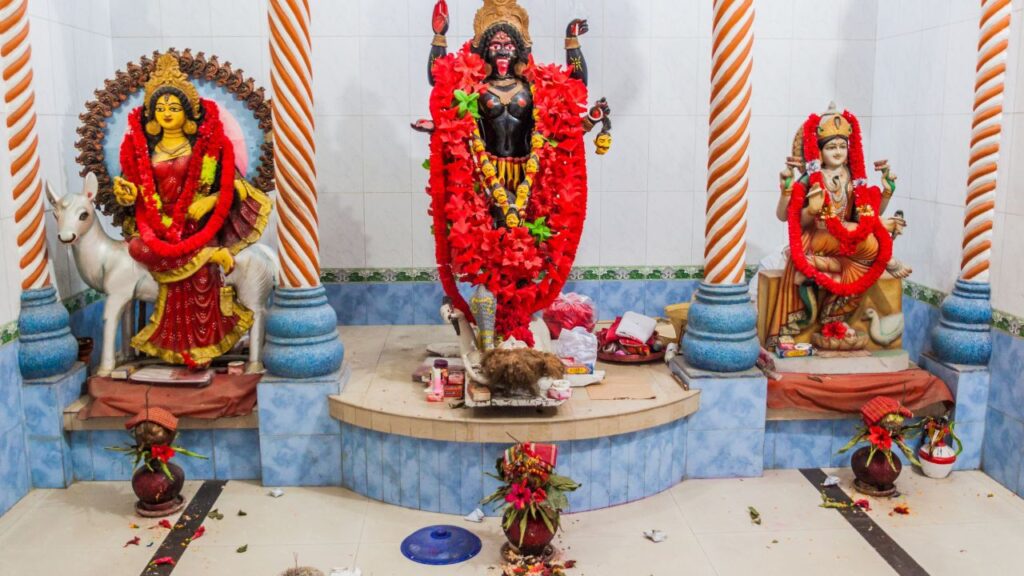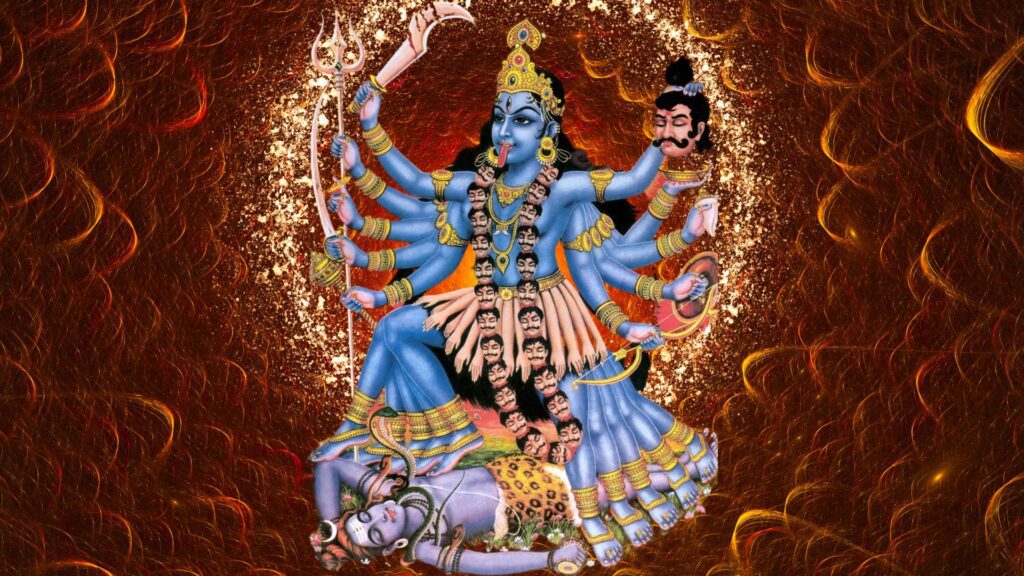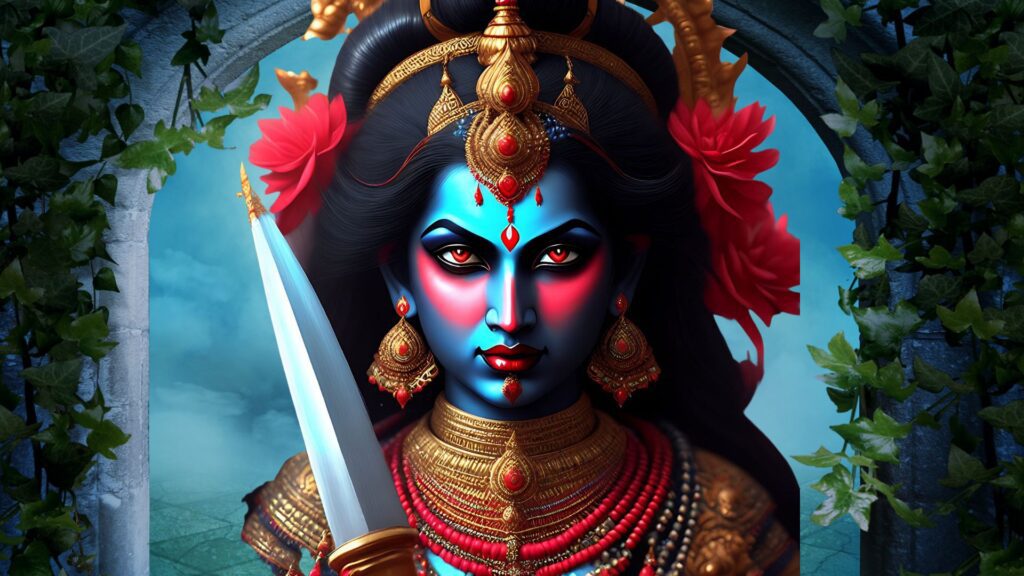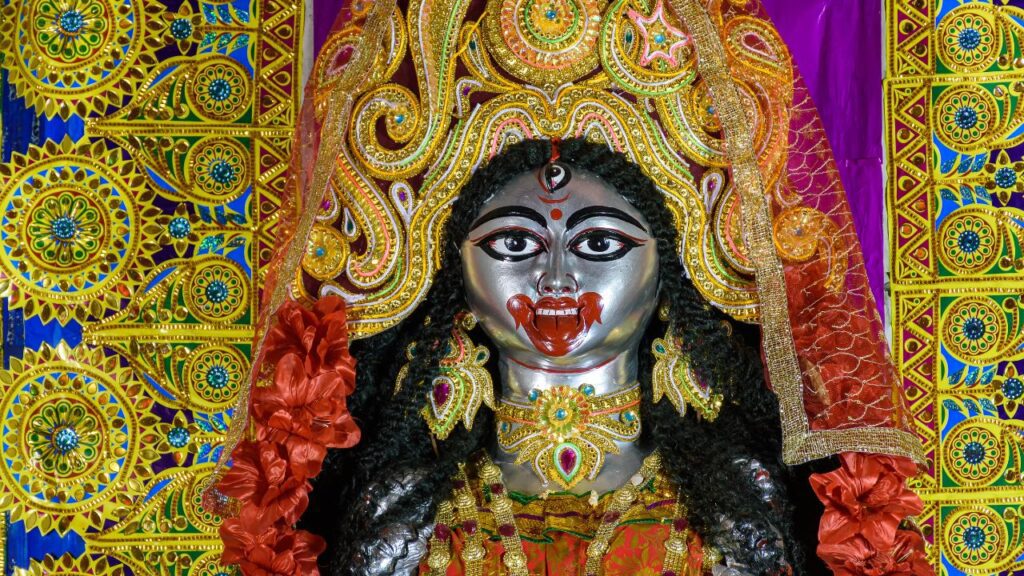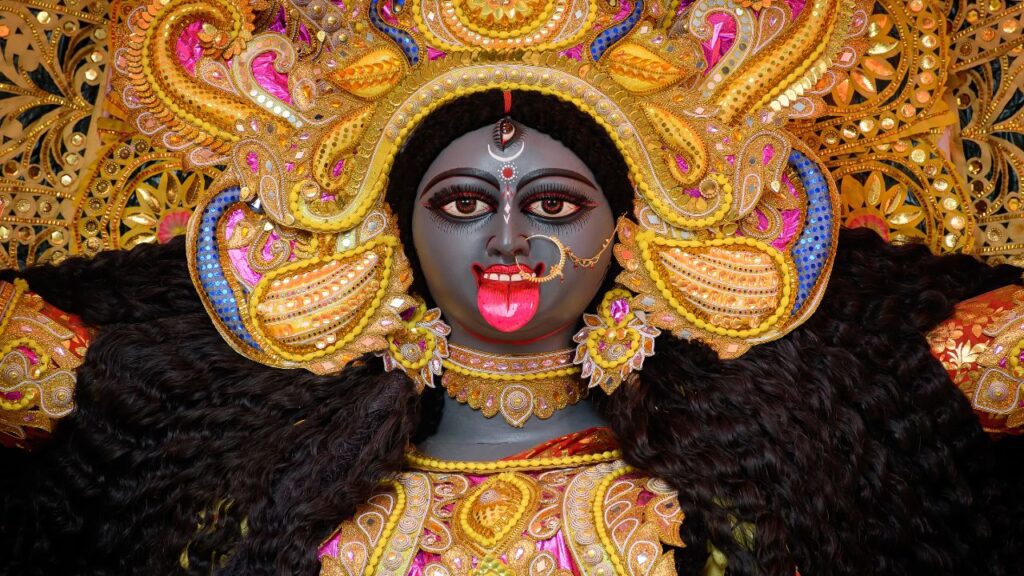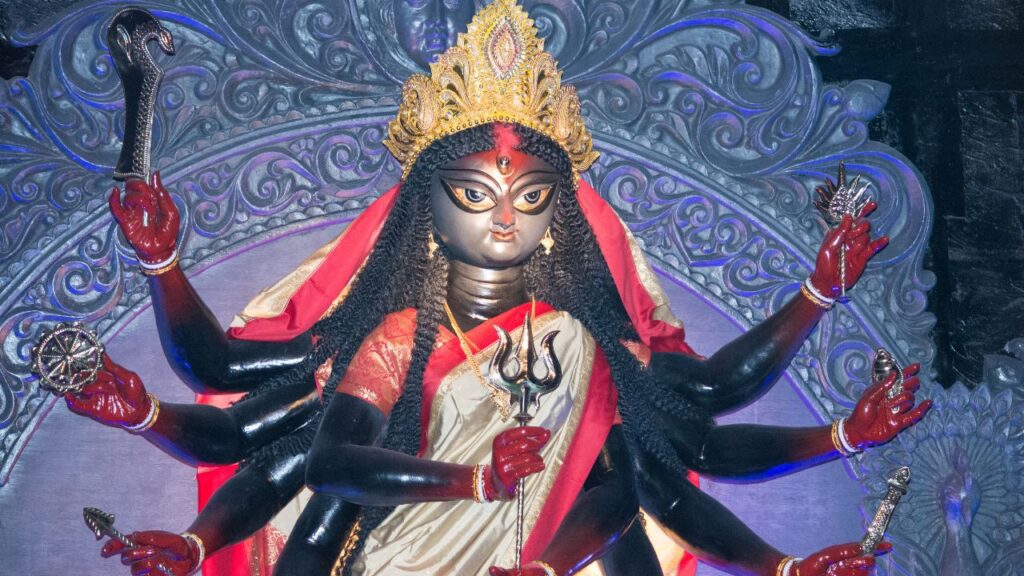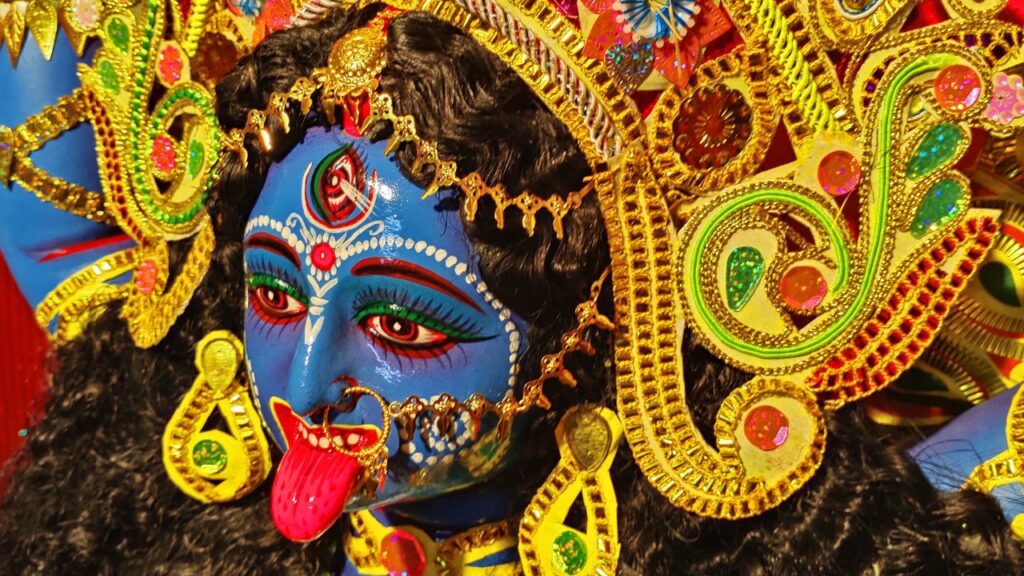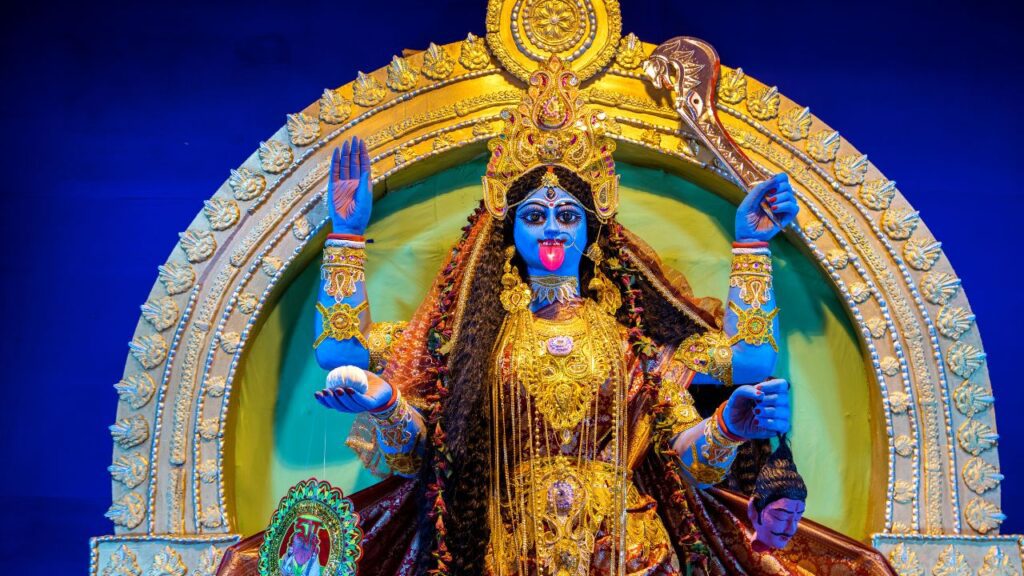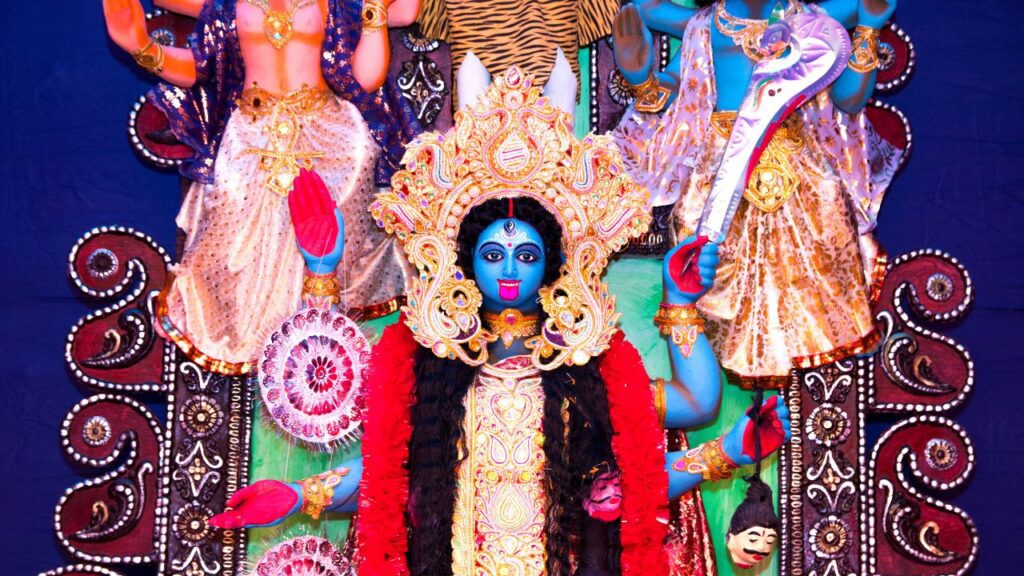Different Forms Of Kali | Learn Their Significance
Introduction
Both worshipers and academics have long been captivated by the ferocious and mysterious Hindu goddess Kali. Widely misinterpreted because of her striking beauty, Kali is far more than just a goddess of destruction. Representing the cyclical character of life, she embodies the universal energies of time, life, and death. We investigate the twelve fascinating forms of Goddess Kali in this thorough study, each with special spiritual meaning and symbolism.
Adya Kali: The Divine Authority
Particularly in the state of West Bengal, one of the venerated Dasha Mahavidyas, Adya Kali, is worshipped with great ardent dedication. Within the Hindu pantheon, she is the greatest form of divinity—the incarnation of the primal power. Adya Kali’s relationships to other goddesses including Durga, Parvati, and Kali herself highlight the interdependence of these heavenly feminine powers, each reflecting many facets of the global Mother.
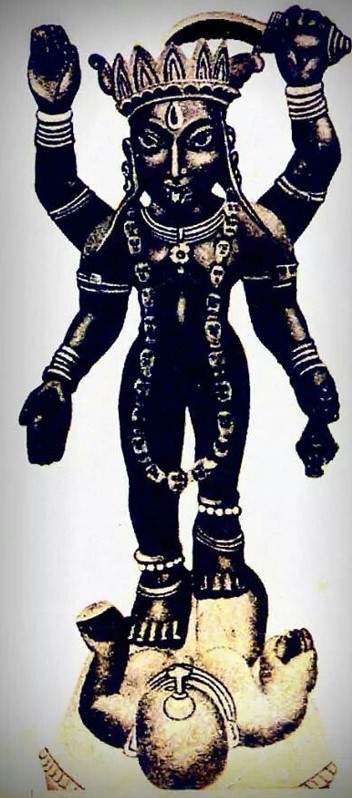
Matangi Kali: The Savage Saraswati
The fierce expression of Saraswati, the Goddess of Knowledge, is Matangi Kali. Often receiving offerings of stale food, she lives on the margins of organized Hinduism. Though she is hardly revered in the household, Matangi Kali, known by Chandalini, is very important in tantric rites.
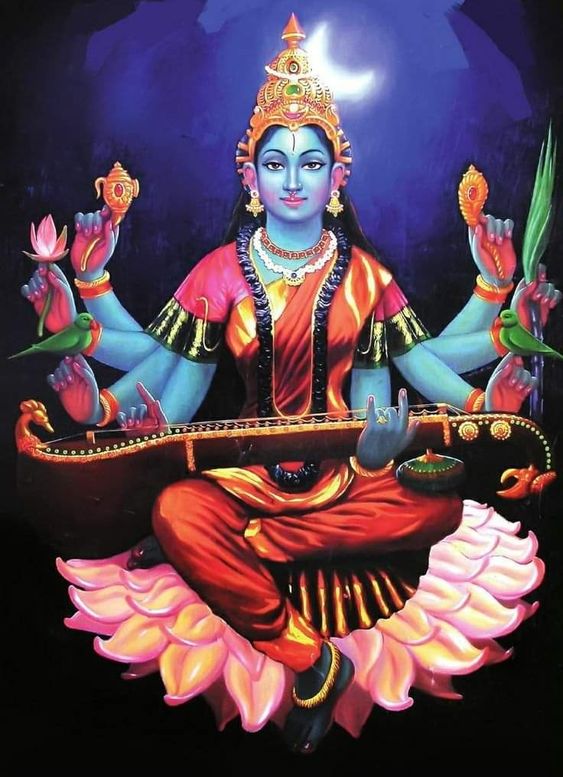
Chhinnamasta Kali: The Death-Cycle of Life
Perhaps the most shocking of Kali’s forms; Chhinnamasta Kali is shown with a severed head from which she absorbs her own blood. This startling picture captures the life and death, the constant cycle of creation and destruction, Kali oversees.
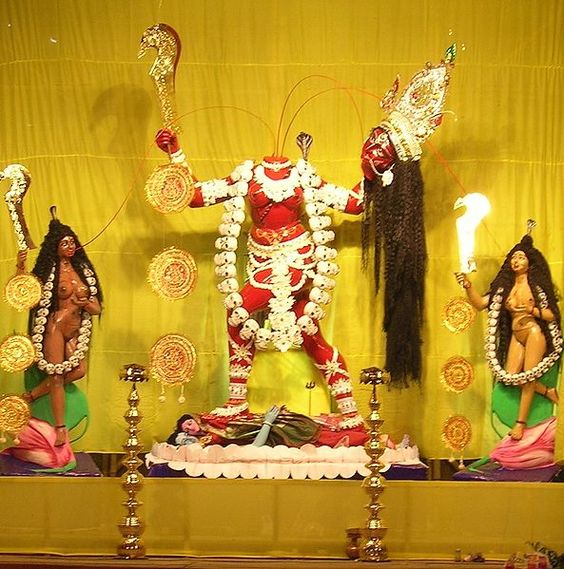
Shamsana Kali: The Crematorium’s Guardian
The goddess Shamsana Kali watches over the operations on the cremation, the hallowed site where the dead are placed to rest. Unlike other Kali forms, this one is shown with only two hands and no projecting tongue, therefore reflecting more humanly the divine.
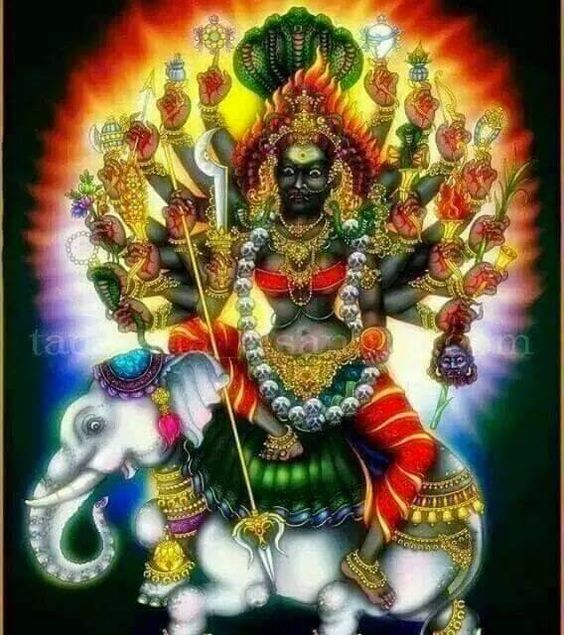
Bagala Kali: The Savage Authority
Though Bagala Kali is a harsh and merciless side of the goddess, her beauty is unmatched. She is frequently seen dragging out the tongues of devils, hence symbolizing Kali’s great force to both create and annihilate.
Dakshina Kali: Mom of Mercy
The most often used form of Kali in Bengal is Dakshina Kali. Considered the mother of charity, she is supposed to guard her followers from mishaps and bad fate. Said to be fearing her name even Yama, the deity of death, emphasizes her control over life and death.
Bhairavi Kali: protector and harbinger of death
Although Bhairavi Kali is sometimes said to be the death’s messenger, she is also regarded as a guardian mother. Her major temple of worship is in the state of Tripura, so giving this form of the goddess clear geographical relevance.

Tara Kali: The ferocious and protective one
Tara Kali is generally shown clad in a tiger’s skin and has unusual bright blue complexion. This version of Kali captures the paradox of the divine feminine by reflecting her ferocious yet protective quality.
Shodoshi Kali: The Magical Stress
Shodoshi Kali is shown as a young girl growing from innocence, a seductress. With her seductive and enchanting demeanor, this avatar of Kali symbolizes her transforming power, able to guide her followers to enlightenment.
Kamala Kali: Lakshmi’s incarnate form
An incarnation of Lakshmi, the goddess of riches and good fortune, Kamala Kali is Two elephants accompany her often to represent her grandeur and majesty as well as the gifts of plenty she can bestow upon her followers.
Guhya Kali: The Subtle Female Energy
Closely related with tantric techniques, Guhya Kali stands for the latent female force. Considered the wife of Kaleshwar, the Lord of Time, she is sometimes known as Kaleshwari.
Dhumavati Kali: Widow’s Smoke Goddess
Since Dhumavati Kali is the only deity in Hindu mythology who is widowed, she is a singular sort. Often referred to as the “Smoke Goddess,” she stands in for the darker, more demanding sides of existence.
Kali’s Twelve Forms: Transformative Authority
For those of Goddess Kali’s devotees, knowing and honoring the twelve forms of her will cause great change and empowerment in their life. Every manifestation provides unique benefits and energies that enable people to embrace the cyclical character of life—that which includes death—by means of the universal power of the divine feminine.
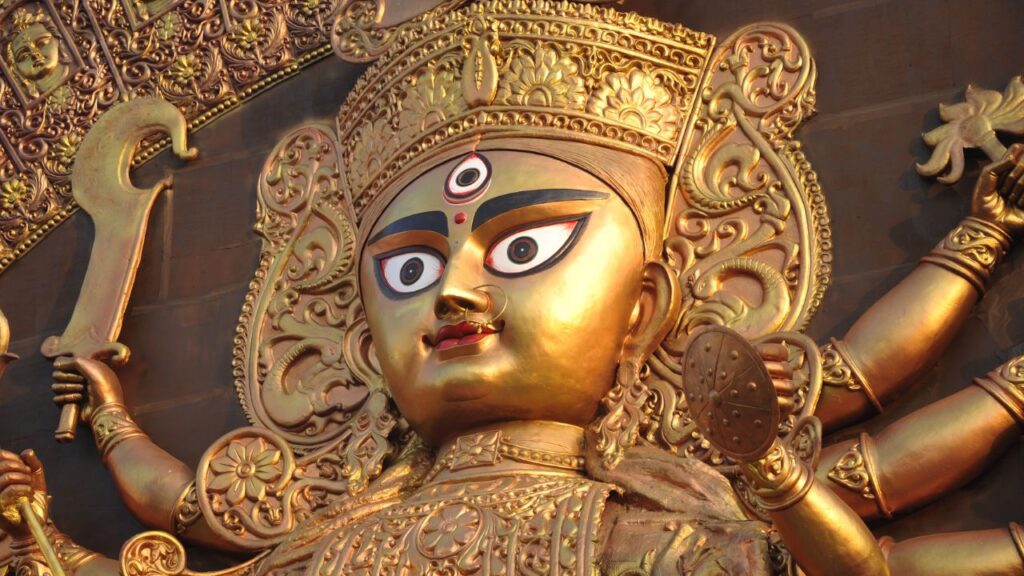
Conclusion: accepting the multifarious Goddess.
The twelve incarnations of Goddess Kali reflect the several aspects of existence and the world rather than only mythical characters. Examining the hidden meanings and symbolism behind every expression helps one to start a transforming spiritual trip, acquiring knowledge, power, and finally emancipation.
Keyword: Different Forms of Goddess Kaali, Main Secondary Keywords: Goddess Worship, Dasha Mahavidyas, Hindu Mythology, Goddess Kali, Tantric Techniques
Aiming to give readers a complete knowledge of the several incarnations of Goddess Kali and their relevance in Hindu spirituality, the general tone of the text is instructive, interesting, and kind.
